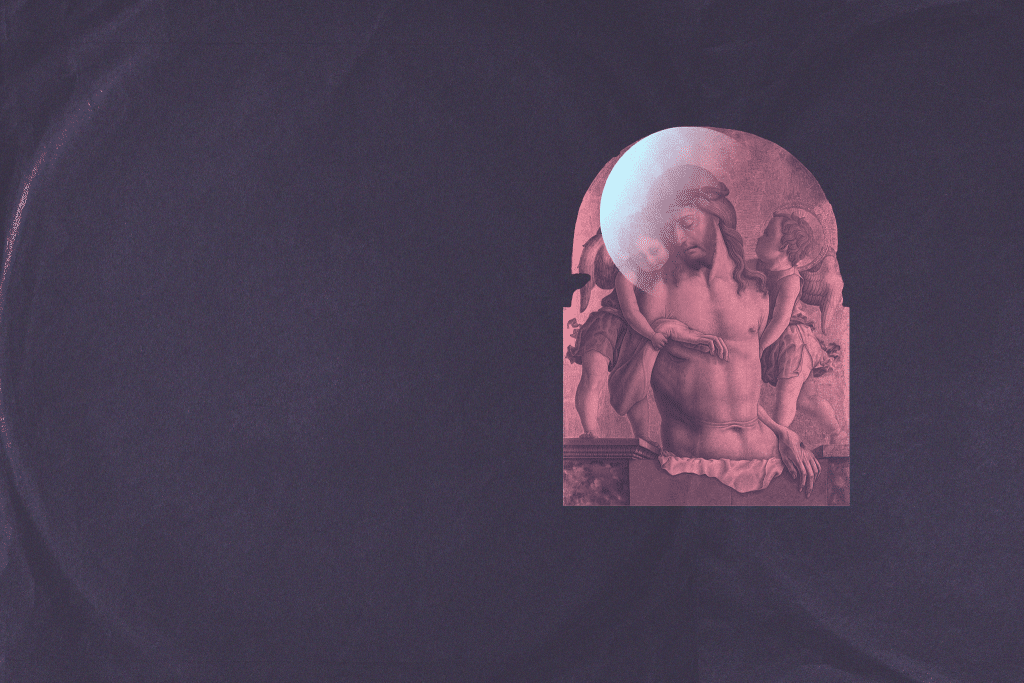The changes to the translation of the Mass which were instituted in Advent of 2011 happened in my first year of priesthood. I remember the slight changes such as, “And also with you,” to, “And with your spirit.” But the one change which was most striking to me were the words of the priest immediately after the consecration. He simply says “the mystery of faith.”
The mystery of faith is what happens at each Mass. The simple gifts of bread and wine are radically changed into the body and blood of Jesus Christ. They take on a new substance, imbued with the power to bring the baptized into profound communion with God. But this mystery is rooted in the events of Holy Week. It has the capacity to bring us into communion with God because of what Jesus did for us some 2000 years ago, this very week.
While Christmas may be the iconic Christian holiday in our culture, the four days from Holy Thursday to Easter Sunday are the most sacred time for us as Catholics. Coming on the heels of last year’s pandemic-dampened celebration, we need to approach this year’s feasts with renewed devotion, fervor and commitment. As the Sunday obligation has returned for most Catholics, these days are a time for reflection on what exactly is “the mystery of faith.”
The Paschal mystery is the passion, death and resurrection of Jesus Christ. It is the central tenet of our Catholic faith. Jesus came into this world to save those who believe in him. He came to show us the depth of the Father’s love for us. This love is not a word-centered love but an action-centered love. Therefore, the primary way Jesus shows us his love is through his actions, through his suffering and death on the cross. His death was not a tragic failure of a prophetic life, as some have incorrectly taught, but the culmination of a self-sacrificial life. It was the pinnacle of his mission: “ ‘And when I am lifted up from the earth, I will draw everyone to myself.’ He said this indicating the kind of death he would die.” (Jn. 12:32-33)
The death of Jesus was not just prophesied by his words but also by his actions. His final meal, or last supper with his disciples was his ritual enriching of the Passover. Just as God saved his People from slavery in Egypt through the passing over of the Israelites by the Lord’s punishment, so Jesus saves us from sin by death. (cf. Ex. 12:1-31) Just as they had to eat of the lamb sacrificed for this meal to participate in this ritual, Jesus tells his disciples to, “take this, all of you and eat of it. This is my body, given up for you.” Just as the Passover was a sign of the covenant God made with the Jewish people, the Eucharist is a sign of the covenant God offers all of us in Jesus Christ.
Being Catholic is not simply one flavor of Christianity. It is participating fully in the covenant of Jesus in the Eucharist. Receiving the Eucharist is one way we profess not simply with our words but with our actions that we are part of this covenant. He told his disciples to perpetuate this mystery, just as those freed from Egypt were told to perpetuate the Passover. The Eucharist is a profession in Jesus’ death for us. It is a profession that he loved us with the greatest love. (Eucharist Prayer IV)
The Eucharist proclaims that the cross of Christ is not devoid of meaning. Jesus’ death was not an accident, or pointless or something over which he had no power. It was the free offering of himself in obedience to the Father for the forgiveness of our sins. This salvific meaning of the cross is why we refer to the sadness of Calvary and the suffering of Jesus on the day as Good Friday.
But this reality is not simply that Jesus died for us. Our response at Mass is “We proclaim your death, O Lord, and profess your resurrection until you come again.” The death of Jesus is not the end of the story. The culmination of the Paschal mystery is Jesus’ resurrection from the dead. He does not simply say that he is more powerful than death but he demonstrates irrefutably by rising from the dead. The pinnacle of these days is the celebration of the Easter Vigil: the light of Christ (the paschal candle) shining into the darkness, hearing the story of salvation history leading up to the great Alleluia, celebrating God’s decisive victory over sin and death through Jesus.
In 2020, we were not able to celebrate these tremendous feasts with all the fervor we desired. Instead of a great shout at Easter, we had a quiet alleluia. This year, we need to – with all due caution and prudence – increase our celebration of these mysteries. We need this time of diving deeply into our faith. Our Lenten fasting and times of retreat are important. But celebrating the richness of these three days – Holy Thursday, Good Friday and the Easter Vigil – is also an important time for us as Catholics.
The change in the liturgy ten years ago from “Let us proclaim the mystery of faith” to simply “the mystery of faith” reminds us that what is happening is not primarily our speaking about these truths but entering into this action. Because we worship the God of the living, we are not simply calling to mind these events and receiving the grace of God as if we were there. So this week do two things: partake fully in these liturgical celebrations by going to the Mass of the Lord’s Supper, the Liturgy of the Lord’s Passion and the Easter Vigil, and celebrate Easter with all the richness and joy it deserves!
